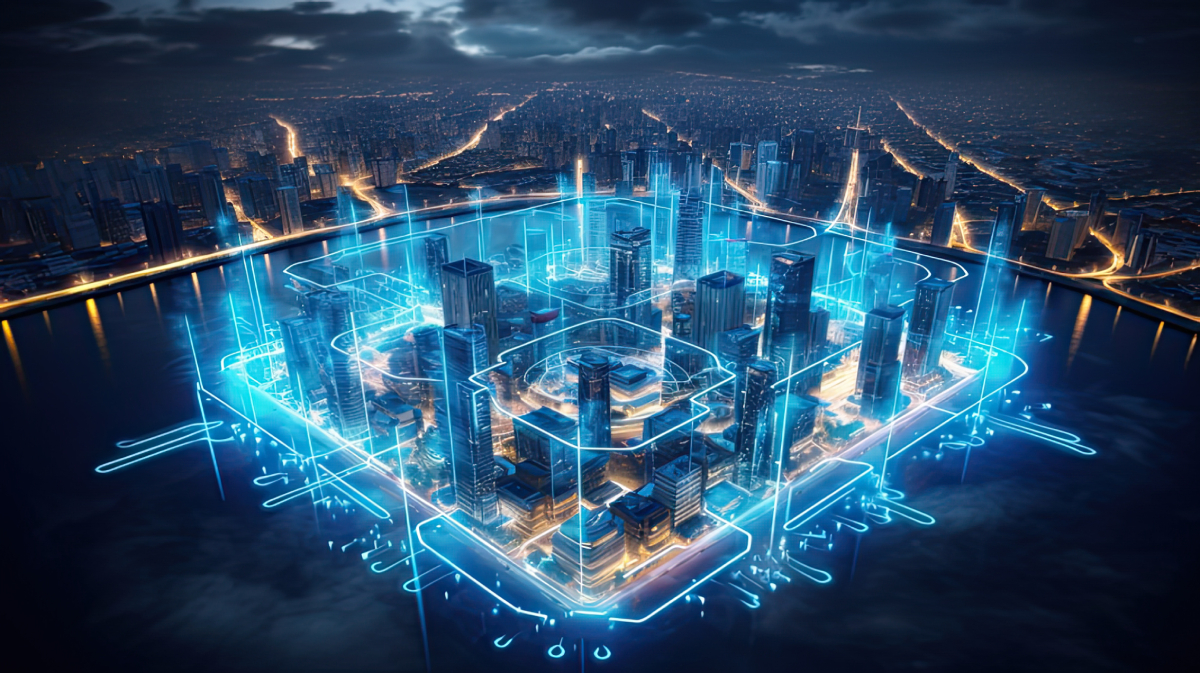Peter Jackson, Managing Director at Jacksons Fencing, outlines the role of perimeter fencing in protecting data centres and safeguarding digital futures.
In an age defined by unprecedented reliance on digital technology, our global dependency has soared to unparalleled heights. This is evidenced by the growing trend in data centre investment among companies spearheading energy-intensive AI development. This heightened reliance accentuates the pivotal role of data centres in shaping modern society.
These facilities serve as the backbone of our digital infrastructure, managing the vast volumes of data and applications essential for the functioning of our economy. Consequently, they have been designated as Critical National Infrastructure (CNI), falling under the protective purview of institutions like the National Cyber Security Centre (NCSC) and the National Protective Security Authority (NPSA) formerly known as the Centre for the Protection of National Infrastructure (CPNI).
With urban real estate prices soaring, data centre operators find themselves grappling with limited options for site selection. Often, they have to consider established urban areas, where they must coexist with residential neighbourhoods or industrial zones.
A complex task
One common misconception about data centres is the notion that ensuring physical security is a straightforward task. However, the reality is far more nuanced. Beyond fortifying the perimeter, data centre operators must contend with a myriad of security challenges.
These include implementing robust access control measures, deploying strategies for hostile vehicle mitigation (HVM), safeguarding power infrastructure, including backup generators, and decentralising security systems to ensure redundancy and autonomy from the main data centre.
By addressing these complexities head-on, data centre operators can better safeguard their facilities and uphold the integrity of our digital infrastructure in an increasingly interconnected world.
Balancing aesthetics and security
You might not realise it, but the way a site looks can be a big deal. If you go overboard with security measures, like towering fences, razor wire, CCTV, and floodlights, you could end up advertising that you’re hiding something valuable. Ironically, this might make the site more appealing to opportunistic intruders.
We often suggest beefing up security with these kinds of measures, but it’s crucial to strike the right balance. You want the site to look secure enough to give peace of mind to the client, but not so intimidating that it stands out like a sore thumb.
So, how do you find that sweet spot where security, acoustics, and aesthetics all work together?
A visually appealing acoustic fence, standing around three metres tall, would function as a sturdy security barrier while discreetly reducing noise for neighbouring properties.
This design achieves both practicality and aesthetic charm, providing effective security and privacy without the intimidating presence of a fortress, and simultaneously mitigating noise pollution for a more serene environment.
Fortifying the fort
Security is of course paramount when it comes to safeguarding essential facilities like data centres. Investing in appropriate security measures is crucial, as cutting corners can lead to greater long-term expenses and increase the risk of disruptive attacks.
To ensure effective security, it’s essential to refer to independent accreditations and certifications such as the Loss Prevention Certification Board’s (LPCB) LPS 1175 ratings, NPSA approval, and the police initiative Secured by Design (SBD). These certifications guarantee proven levels of protection through thorough technical evaluations and quality audit processes.
Maintaining your site
Regular maintenance is also necessary. It’s like tending to a garden. Just as neglecting to water and prune can result in a wilting and overgrown garden, failing to inspect and upkeep physical security measures can leave vulnerabilities unchecked and defences weakened. It’s surprising how many companies overlook this crucial aspect, with 63% admitting to never testing their physical security.
Ensure you inspect all sides of the perimeter for signs of attempted breaches. Factors such as foliage, weather conditions, and changes in topography can impact security integrity. Additionally, examine all fixtures and fittings for damage or corrosion, and ensure that litter and debris are promptly cleared away.
Efficient entry
Access control is another critical aspect to consider. Simply installing security measures and hoping for the best will not guarantee 24/7 protection.
Speed gates offer an excellent solution for data centres, ensuring swift access while maintaining security. The consequences of access control equipment failure can be severe, underscoring the importance of regular maintenance and attention.
Sound solutions
Data centres often generate considerable noise due to their 24-hour operation which can be jarring in built-up neighbourhoods. To mitigate this, security measures with noise reduction capabilities, certified through LPS 1175 and NPSA, can be employed. These high security acoustic barriers provide both aesthetic appeal and robust security, blending seamlessly into their surroundings.
Unified defence
Given the diverse range of threats data centres face, collaboration with government bodies like NPSA and certification boards such as the LPCB is invaluable.
By leveraging their expertise, specifiers can ensure the selection of effective and quality security products tailored to their specific needs, thus keeping data centres safe and secure.



